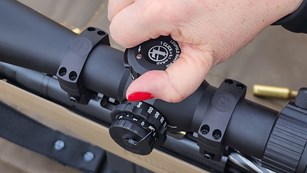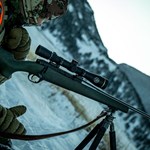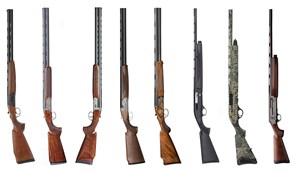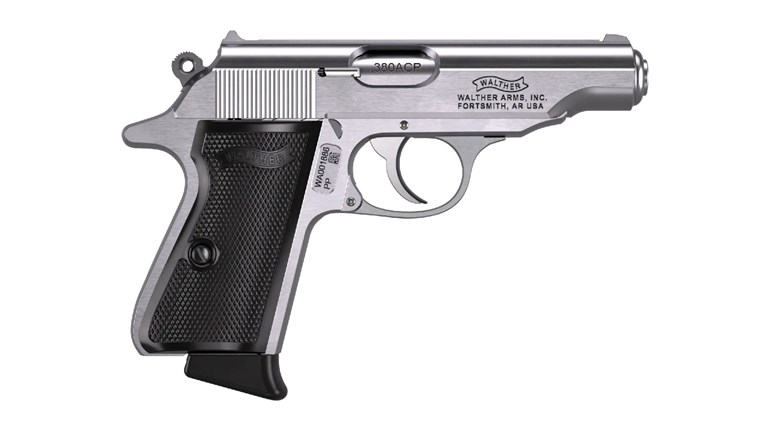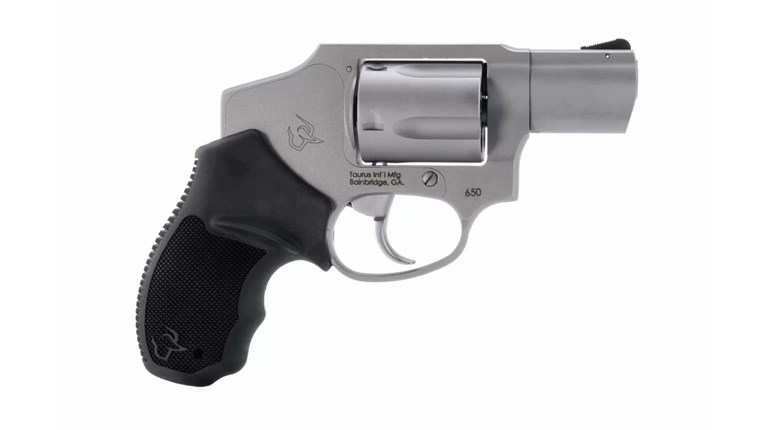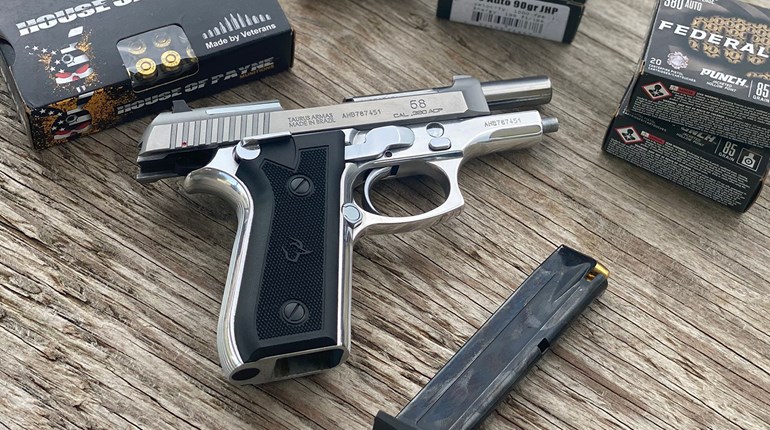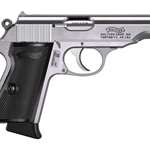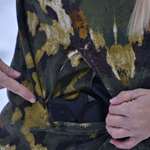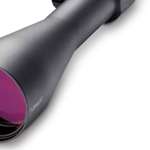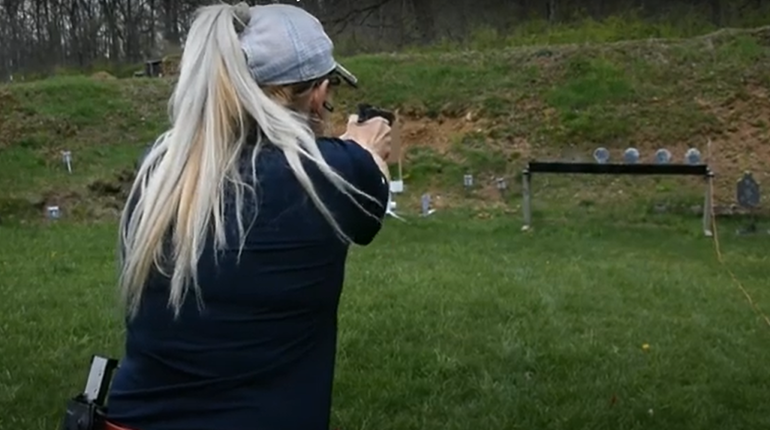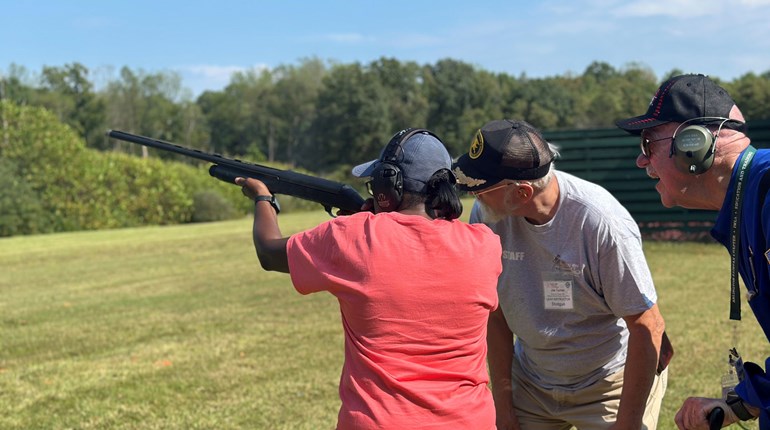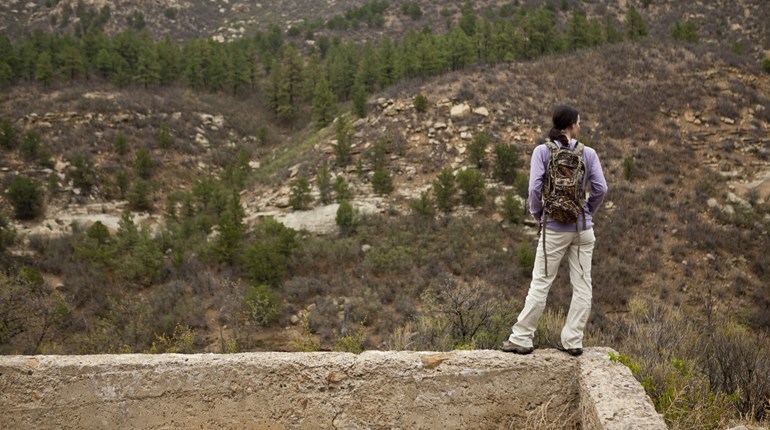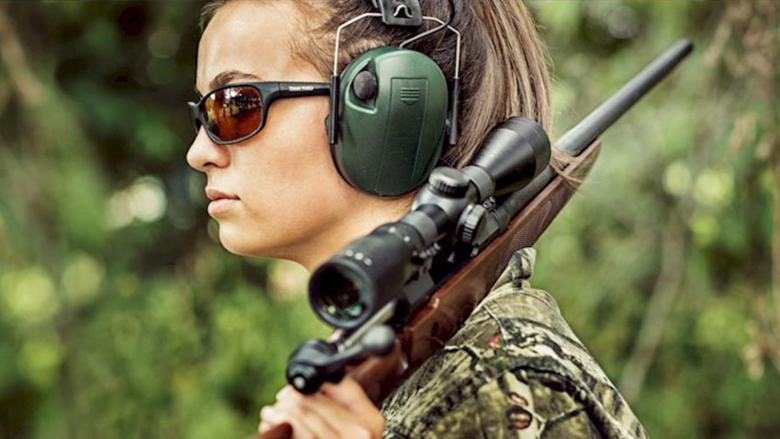
Some concealed-carry practitioners question whether or not snub nose, double-action revolvers are still relevant for concealed carry in this day and age of polymer-framed compact pistols. Nevertheless, manufacturers keep cranking out new models each year. In fact, one company that built its reputation around semi-automatic pistols and rifles joined the revolver business in 2024. Diamondback Firearms' first revolvers are the SDR series configured with daily carry and personal protection in mind. Having worked with two examples from the series, including the 9 mm model shown in the photos, I've found these guns have a good deal to offer at a fair price.
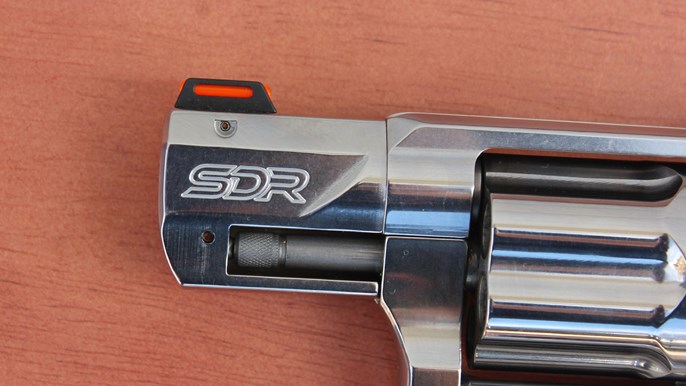
The SDR revolver is made here in the United States.
Well Balanced Stainless Steel Construction
The SDR is a double-action/single-action (DA/SA) revolver with a swing-out cylinder that, despite its compact size, holds up to six rounds of ammunition instead of five. Major components of the SDR are made from durable, corrosion resistant stainless steel. This includes the 2" long, full under-lug barrel, the cylinder and a forged frame. Customers can choose from a high-polish finish (shown), a glass bead blasted matte finish or a matte black nitride coating applied over the stainless steel.

This revolver packs 6 rounds of ammunition into a 5-shot size package.
Sporting an overall length of 6.53”, height of 4.44” and a cylinder width of 1.38”, the SDR weighs 21.2 ozs. This makes it a bit heavier than the aluminum-framed five-shot snub guns that weigh in at around 15 to 18 oz. However, it is lighter than some of the all-steel five shots which tip the scales at around 23 to 25 oz. It is also slightly lighter than some 9 mm compact pistols, like the Mete MC9 Prime, which weighs 23.8 ozs.

Both the trigger and cylinder release operate cleanly and smoothly.
Caliber Options
The SDR series currently includes two caliber configurations. Folks can choose from the .357 Mag./.38 Spl. or 9 mm chambering. For a concealed-carry revolver, the .38 Spl. cartridge is still king. But choosing a small revolver chambered for the more potent .357 Mag. has its advantages. First and foremost is flexibility. The SDR in this caliber can safely fire ammunition ranging from the softest shooting target .38s, for comfortable practice and plinking sessions, up to the most potent defense-grade .357 Mag. loads. If it is also going to be used as a trail gun, it can be stoked with deep penetration loads designed for defense against dangerous game.

The grip frame is sized for round butt J-frame grips.
The 9 mm version of the SDR brings a different set of advantages to the table. These days the 9 mm is one of the most popular and prolific center-fire handgun cartridges on the market. It is plentiful, affordable and the ammunition selection is diverse. If you already own 9 mm pistols, carbines and reloading dies, then this SDR can be added to your collection without adding another handgun caliber to stock up on and manage.

The front and rear sight are fitted with light gathering fiber optics.
Revolvers are not ammunition sensitive, so they don't mind the shifts in cartridge pressure that come with switching from lower velocity practice-grade loads up to the hot 9 mm +P defense grade ammunition. The levels of felt recoil with this version of the SDR hovered in the .38 Special to .38 Special +P range which is similar to the kick generated by the “Micro Nine” style semi-automatic 9 mm pistols. The SDRs chambered in this caliber use a thin, spring-steel full moon clip, or just moon clip, to hold the six round of ammunition together, much like the speed loaders used with rimmed revolver rounds.

The button on the right of the frame is a cylinder release of a different sort.
Easy Clean Removable Cylinder
The SDR series has an uncommon but handy feature for a concealed-carry revolver. On the right side of the frame, just above the front edge of the trigger guard, is a small round button. With the cylinder opened, pressing this button releases the cylinder's yoke so that the entire cylinder assembly can slide forward and out of the frame. Most revolvers have a screw in this position on the frame which makes removing the cylinder assembly more complicated.

The right side button allows the cylinder assembly to be removed from the frame.
The vast majority of snub guns do not have a spring loaded release like this one. I do wonder why Diamondback took the time and energy to install one on the SDRs. This feature would be most conducive for a caliber convertible model, like the Taurus Tracker 692 which ships with two cylinders, one .357 Mag./.38 Spl. and the second chambered in 9 mm. Diamondback could do the same thing and I hope they will some day.
Concealed Carry Styling
The SDRs are unmistakably configured with daily concealed carry and home defense in mind. The 2" barrel sports a 45-degree target crown and an under lug milled to shroud the ejector rod. This revolver ships with a top-notch set of iron sights consisting of an encased orange fiber-optic up front paired with a dovetailed square notch rear sight fitted with a pair of green fiber optics. The fiber optics gather ambient light to provide a 3-dot sight picture which is easy to see in most lighting conditions.

The SDR was reliable with all ammunition tested.
The cylinder release button, located on the left side of the frame, is a wide serrated wedge shape. It is a push-button type release, like those used with Kimber and Ruger revolvers. The SDR's release succeeds at being low profile while being easy to use. It is intuitive to reach with the shooting hand thumb and requires a just-right amount of pressure to operate. That is to say, enough pressure that it feels reliable without having to press so hard as to make it inconvenient to use.

Custom moon clips and tools are handy accessories for the shooting range.
This revolver is similar enough in its external dimensions to make it compatible with many of the hostlers sized for Smith & Wesson J-frame-type revolvers. It ships with a compact pebbled black rubber “boot” grip which provides a smaller footprint for concealment. The round-butt grip frame dimensions are also borrowed from the J-frames. This makes it compatible with a wide variety of aftermarket grips for those who would like to swap out this grip for one that is a different size or material.
The question of whether a carry revolver should have an exposed hammer for double-action or single-action fire or a concealed hammer with a double-action-only trigger (DAO), continues to be debated. The revolvers designed with pocket carry in mind often have a concealed (shrouded) or bobbed hammer. This gives the gun a snag-free profile for a quick draw from concealment. But these DOA guns fire with a long and fairly heavy trigger pull for every shot fired.

This model arrives with three moon clips.
The SDR's DA/SA configuration and weight is more conducive to holstered carry. The hammer spur works in tandem with a holster retention strap to keep the gun firmly secured. It is argued that in a personal protection situation, a self defender is most likely to draw and fire their revolver as quickly as possible. This means firing it double-action. But a DA/SA configuration like this can come in handy in less time sensitive scenarios, including more casual plinking, target shooting and dispatching pests on the trail or in camp.
The 9 mm revolver shown here exhibited a relatively light double-action trigger pull for a carry revolver. Wheel gun DA triggers can weigh in at over 12 lbs. but this one measured 9 lbs. 9 oz. Manually cocking the hammer for single-action fire shortened the trigger's arch of travel to about a quarter of an inch and reduced the pull weight to just 3 lbs. 2 oz. Overall, the trigger was smooth, clean and well tuned.

The best individual group of 1.88” was fired using the Hornady Critical Defense load.
Slick Shooters
I spent some time on the range with the 9 mm SDR for this conversation with satisfying results. The revolver operated reliably throughout the course of testing with all of the 9 mm loads fired and the three provided moon clips. For those who are looking for additional moon clips, along with mooning and de-mooning tools, I've found that TK Custom offers a broad and useful selection of top-notch clips and tools on their website.
Formal bench-rested performance testing was conducted at 7 yards by firing five 5-shot groups into paper targets with three loads manufactured by Hornady and Winchester. A Garmin Xero C1 Pro was on hand to measure bullet velocities for 10-shot strings. Here are the results:
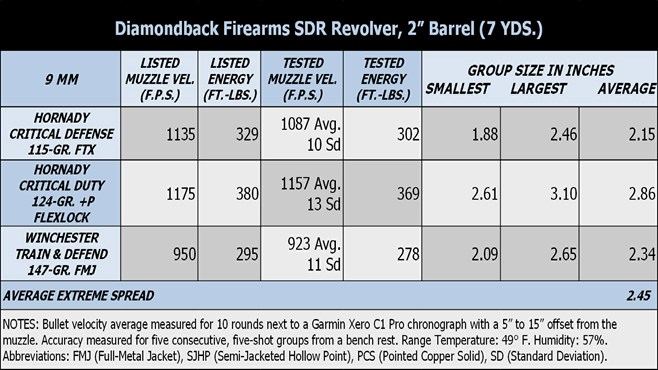
As of this writing, I've had the opportunity to work with the SDR in both available caliber configurations. For a company that is brand new to defensive revolvers, they got SDRs right. These guns look, feel and operate like models that have been in production for decades. Although they are not the least expensive options available, their quality and reliability means they can comfortably go toe to toe with models that are listed for $100 to $200 more and hold five rounds in their cylinders instead of six. For more information, visit diamondbackfirearms.com.

Diamondback Firearms SDR Specifications:
Manufacturer: Diamondback Firearms
Action Type: double-action/single-action revolver
Chambering: 9 mm, 9mm +P
Frame: forged stainless steel, polished finish
Barrel Length: 2"
Rifling: Six-Groove, 1:18.75" RH Twist
Cylinder Capacity: six-round
Sights: orange fiber optic front, green fiber optic square notch rear
Trigger: double-action, 9-lb. 1-oz. pull; single-action, 2-lb. 15-oz. pull
Overall Length: 6.53"
Height: 4.44"
Width: 1.38" Cylinder
Weight: 21 ozs. unloaded
Accessories: three moon clips, owner's manual, zippered soft case, cable lock
MSRP: Glass Bead Stainless $777; Polished Stainless $821; Black Nitride $821


